Arena of Valor Competitive Decline: Causes, Impact, and Future
Updated On: October 23, 2025 by Aaron Connolly
Understanding the Arena of Valor Competitive Scene
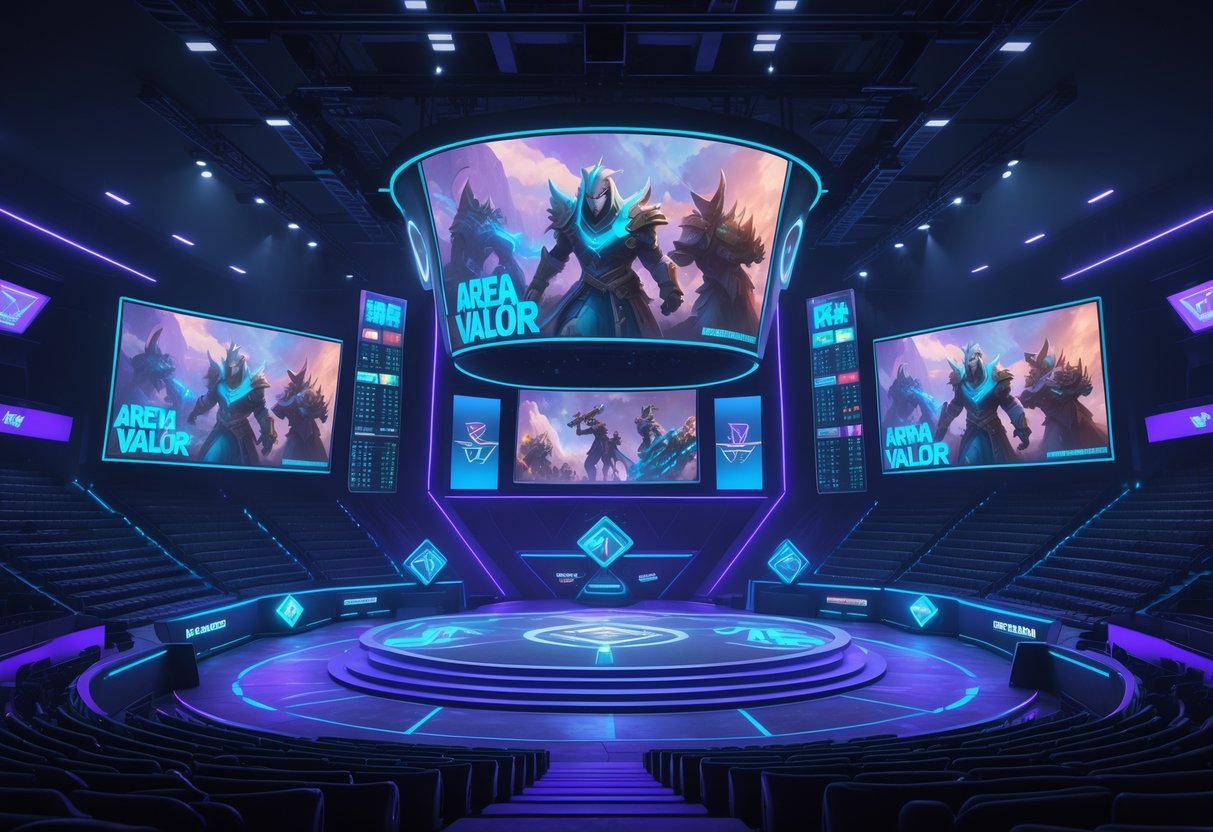
Arena of Valor’s competitive scene started with small regional mobile tournaments and grew into a global esports ecosystem with millions in prize money.
The game went through major regional shifts that ended up shaping the competitive landscape we see now.
Evolution of Competitive Play
Arena of Valor kicked off its competitive journey in 2016 with local tournaments across Asia.
Players quickly noticed it could deliver that mobile MOBA vibe, but with gameplay that felt surprisingly close to console quality.
Early tournaments had prize pools between $10,000 and $50,000.
Pro teams began forming, bringing in full-time players and coaches.
The format settled into 5v5 matches with draft phases, a lot like PC MOBAs.
Teams faced off in best-of-three regular season matches and best-of-five finals.
By 2018, international competition became the norm.
The Arena of Valor World Cup drew teams from over 15 countries with a $500,000 prize pool.
Professional infrastructure grew fast:
- Dedicated training facilities
- Full-time coaches
- Player contracts and salaries
- Sponsorships with big brands
Rise of the Esports Ecosystem
Around 2019 and 2020, the Arena of Valor esports ecosystem hit its peak.
Leagues popped up across regions, and teams like Nova Esports, Buriram United, and MAD Team dominated.
Some pro players earned salaries from $2,000 up to $15,000 a month, depending on their region and team results.
Top tournaments offered prize pools topping $2 million annually across all events.
Big esports orgs and sponsors jumped in.
Teams started investing in gaming houses, analysts, and full-on training programs, just like traditional sports.
Broadcasting partnerships landed with streaming platforms and even TV networks.
During prime seasons, regular matches pulled in hundreds of thousands of viewers.
But by 2021, the competitive scene started slipping.
Many pros moved on to other games as tournaments got less frequent.
Regional Popularity Shifts
Asia-Pacific regions really drove Arena of Valor’s success, especially Thailand, Vietnam, and Taiwan.
These markets kept local tournament circuits strong and viewership high.
Meanwhile, the game just couldn’t catch on in the West, especially the US and Europe.
Cultural differences and competition from established PC MOBAs stunted growth.
Key regional patterns:
| Region | Peak Period | Current Status |
|---|---|---|
| Thailand | 2018-2020 | Active but reduced |
| Vietnam | 2017-2021 | Declining |
| Taiwan | 2018-2019 | Minimal activity |
| Europe | 2018-2019 | Largely inactive |
| Americas | 2018-2020 | Discontinued |
Regional tournaments closed down, and the decline sped up.
Many pro teams disbanded or switched focus to other esports.
Local community tournaments still pop up in some Asian markets.
But that professional infrastructure from before? It’s mostly gone since 2022.
Signs of Decline in Competitive Arena of Valor
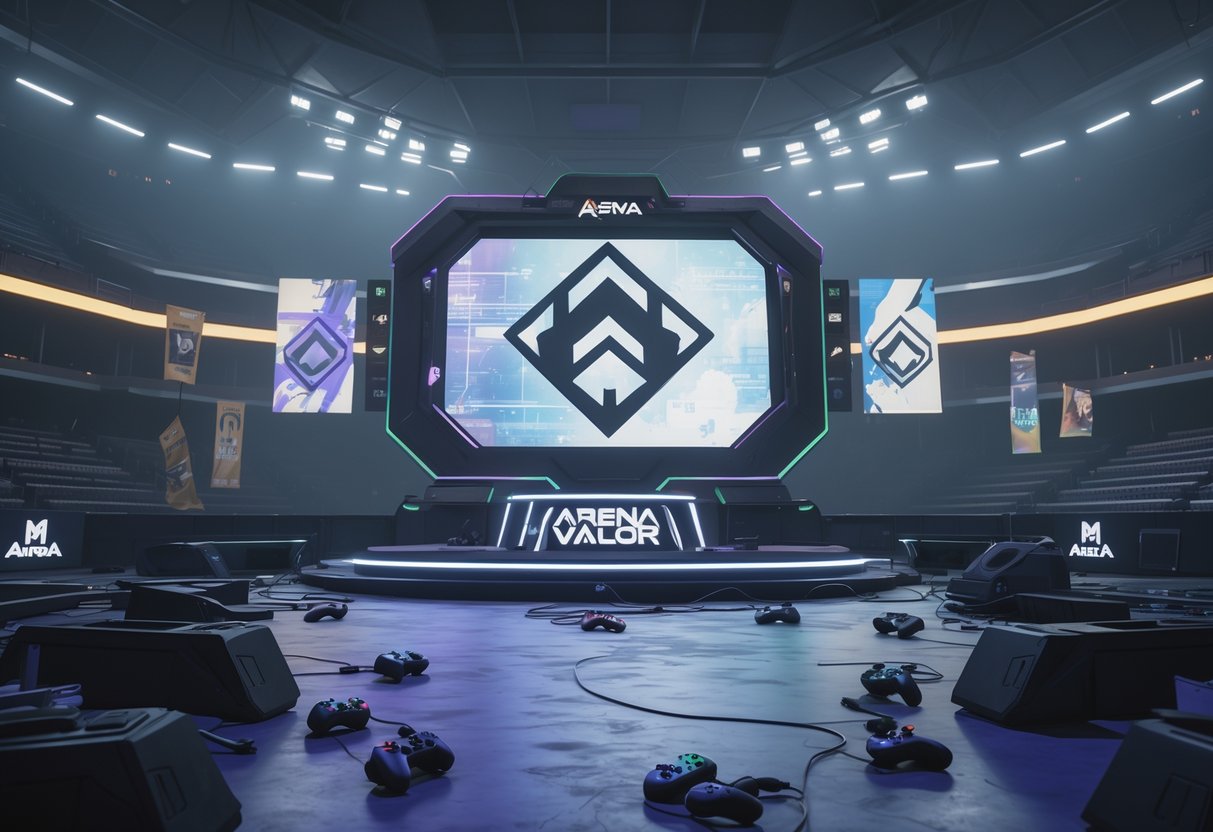
The decline isn’t subtle. We see shrinking player numbers, fewer tournaments, and prize money that just keeps dropping.
Daily active users fell by about 30% in two years, and major regions now host tournaments way less often.
Shrinking Player Base
Arena of Valor’s player base has really dropped off since its best years.
Daily active users fell by roughly 30% in the last two years, according to activity reports.
Western markets, like the US and Europe, got hit the hardest.
Most competitive players there prefer PC gaming for serious matches.
Southeast Asian countries like Vietnam and Thailand hold on to more players.
But even there, growth has slowed compared to before.
With fewer active players, ranked queues take longer.
That makes things worse—people leave because of long waits, and the cycle repeats.
Players complain about matchmaking quality.
Skill gaps in matches have grown, so the competitive experience just isn’t what it used to be.
Decreasing Tournament Participation
Tournament activity has dropped across all the big regions.
The Arena Challenger Series Pro League in Taiwan and Realm of Valor Pro League in Thailand now run fewer events each year.
North America and Europe face the biggest issues.
A lot of Western orgs switched over to PC MOBAs like League of Legends.
Teams have a tough time keeping rosters together when prize opportunities dry up.
Viewership for the remaining tournaments keeps slipping.
Events that once drew millions now struggle to hold audience attention.
Amateur and semi-pro leagues see fewer signups.
This grassroots decline hurts the talent pipeline for pro competition.
Reduced Prize Pools
Prize pools have shrunk a lot from their high points.
Without a strong competitive scene, the game’s overall popularity took a hit, and that made things even worse.
Sponsors lost interest in Arena of Valor compared to other esports.
This reduced sponsorship means less prize money for tournaments.
In-game purchases dropped as the player base shrank, which cut into the revenue that usually goes back into events.
Teams and players see fewer financial incentives to go pro.
Prize pools in Southeast Asia still look better than in the West, but even those have dipped compared to a few years back.
With less money on the line, pro players move to more lucrative games or just leave competitive gaming behind.
Key Factors Driving the Decline

Arena of Valor’s competitive scene fell apart for three big reasons.
Tencent’s regional missteps, weak marketing, and questionable monetisation all combined to drive players away.
Imbalanced Updates and Regional Disparity
Tencent tried to treat Arena of Valor as a one-size-fits-all global game.
They didn’t get that Western players really prefer PC MOBAs over mobile.
This misunderstanding led to development decisions that made international tournaments tough.
Different regions ended up with different metas and player preferences, so global events just didn’t work.
Regional problems:
- Updates dropped at different times depending on the region
- Balance changes that worked in Asia didn’t fit Western playstyles
- No solid cross-region competitive structure
- Weak server infrastructure outside Asia
Players in North America and Europe felt ignored.
With only about 250,000 daily users in those regions combined, Tencent ended up abandoning the West.
Garena handled some regions, but even they couldn’t fix the fundamental issues.
The game was built for Asian mobile gaming, not Western PC-focused esports.
Lack of Marketing and New Player Support
Tencent’s marketing efforts fell apart because of internal drama with Riot Games.
Since Tencent owns both Arena of Valor and League of Legends, the two companies clashed over how to market the game.
The worst moment? Tencent used League of Legends pros to promote Arena of Valor, which led to a two-month marketing freeze.
That killed the game’s momentum during a crucial time.
Riot Games got to approve Arena of Valor’s future promotions, which basically tied the game’s hands in competing with other MOBAs.
Marketing failures:
- US and European marketing teams disbanded
- No steady promotional campaigns
- Poor influencer partnerships
- Barely any tournament coverage
New players didn’t have much support.
The game launched in summer 2017 with big promises, but not much community building.
Without onboarding or educational content, casual players just couldn’t break into the competitive scene.
Monetisation Decisions and Pricing Controversies
Arena of Valor’s monetisation model turned off both casual and competitive players.
The game tried to balance free-to-play with making money, but it just didn’t land.
Key monetisation issues:
- Heroes cost too much to unlock
- Pay-to-progress elements hurt competitive balance
- Not enough free content for new players
- Cosmetic items were overpriced compared to other games
New players struggled to build up a competitive hero pool.
Other MOBAs offered more generous free-to-play options, but Arena of Valor felt restrictive.
Competitive players hated that heroes sat behind paywalls.
Spending money gave players a real advantage, which felt unfair.
Tournament organisers couldn’t standardise hero access across regions.
Different places had different pricing, so fair competition was impossible.
Tencent’s shift away from Western support didn’t help.
They started focusing on publishing new games instead of keeping Arena of Valor’s competitive ecosystem alive.
Impact of Development and Publishing Decisions

Bad development and publishing choices really hurt Arena of Valor’s competitive scene.
Differences between regional publishers, communication breakdowns, and weak support systems all played a part.
Differences Between Garena and Tencent Approaches
The split between Garena and Tencent confused players in different regions.
Each publisher had a different take on managing the competitive side.
Garena’s Southeast Asian Strategy:
- Focused on local tournaments with smaller prize pools
- Built grassroots community support
- Used marketing campaigns tailored to their region
Tencent’s Global Approach:
- Threw big money at international events
- Spent $4.5 million on a single tournament, even giving away Teslas
- Tried to attract Western audiences
These clashing strategies made it tough for players to see where the game was headed competitively.
Teams in different regions dealt with totally different tournament formats and prize pools.
The character roster differences didn’t help.
Western versions swapped out Chinese mythology heroes for Batman and Superman.
A lot of players thought this change was pointless and even hurt the game’s identity.
Communication Challenges with Level Infinite
When Level Infinite took over, communication with the competitive community got worse.
Players had trouble getting clear info about tournament schedules and rule changes.
Major communication problems:
- Tournament announcements dropped with little warning
- Rule changes happened without community input
- Different regions used different communication strategies, which confused everyone
Players felt left out of the loop.
Pro teams couldn’t plan ahead when event details arrived last minute.
Social media updates were all over the place.
Some regions got regular news, while others heard nothing for weeks.
A lot of competitive players left because they just couldn’t count on getting the info they needed.
Support and Customer Service Issues
Customer support let down the competitive community.
Pro players waited ages for help with technical issues during tournaments.
Common support problems:
- Account recovery took weeks, not days
- Tournament issues didn’t get priority
- Support quality varied wildly by region
Teams even lost matches because technical problems didn’t get fixed quickly.
Some players waited over a month to sort out account issues that kept them from competing.
There was no dedicated esports support channel.
Competitive players had to use the same support as casual gamers, which just doesn’t work.
Community feedback about balance or competition formats often went ignored.
Serious players felt like the dev team didn’t care.
Honestly, other mobile esports games now run dedicated competitive support channels to avoid all this—and Arena of Valor could have used that.
Competitive Gameplay and Meta Concerns
Arena of Valor’s competitive scene keeps running into balancing issues and old content that just doesn’t cut it for players who want to play seriously. The meta feels stuck on repeat, and the main game modes haven’t gotten the kind of updates that would actually make matches feel new or exciting.
Hero Balance and Meta Shifts
Arena of Valor’s meta has hit a rut. Only a few heroes really matter at the top level, and it’s honestly kind of boring seeing the same picks every match.
The same champions keep showing up in high-level games, so everyone knows what to expect. Predictable gameplay is just the norm right now.
Current Meta Problems:
- Only a handful of heroes are actually viable in ranked
- Big power gaps between top and bottom tier champions
- Devs take ages to nerf overpowered abilities
The balancing team just doesn’t move fast enough, especially when you compare them to Mobile Legends. When a hero gets out of hand, players usually wait through multiple patches before anything really changes.
New players often can’t keep up because they don’t own the meta heroes. Seriously, check tier lists before you spend money on any hero.
Competitive matches feel repetitive to a lot of players. Everyone runs the same comps, so there’s barely any room for surprise or new strategies.
Stagnant Game Modes
Ranked mode in Arena of Valor feels frozen in time. It hasn’t seen a real update in over two years.
We’re still stuck with the same three-lane setup, and nothing new has been added to shake things up.
The draft system barely scratches the surface compared to other MOBAs. There’s no role queue, and the pick/ban phase feels pretty barebones.
Missing Features:
- No custom tournament brackets
- No advanced spectator tools
- No seasonal map changes
- No new competitive formats
Players complain about the lack of fresh content all the time. A lot of them end up switching to games that actually keep things interesting.
Without regular mode updates, strategies get old fast. Pro teams just stick to tried-and-true patterns, and not much changes between tournaments.
Quality of Updates
Lately, updates seem to focus on cosmetics instead of making the game better for competitors. We get new skins all the time, but the actual gameplay issues just sit there.
Update Priorities We’ve Seen:
- New skins and cosmetics: Every month
- Hero balance changes: Maybe every 2-3 months
- Game mode improvements: Almost never
The devs clearly care more about monetisation than about making the competitive scene better. Hardcore players find this really frustrating.
Bug fixes take forever. Sometimes ranked-breaking issues stick around for weeks before anyone does anything.
Players feel like their feedback goes nowhere. The devs rarely acknowledge competitive concerns, so a lot of people wonder if the game even has a future at the top level.
The Role of Esports Organisations and Tournaments
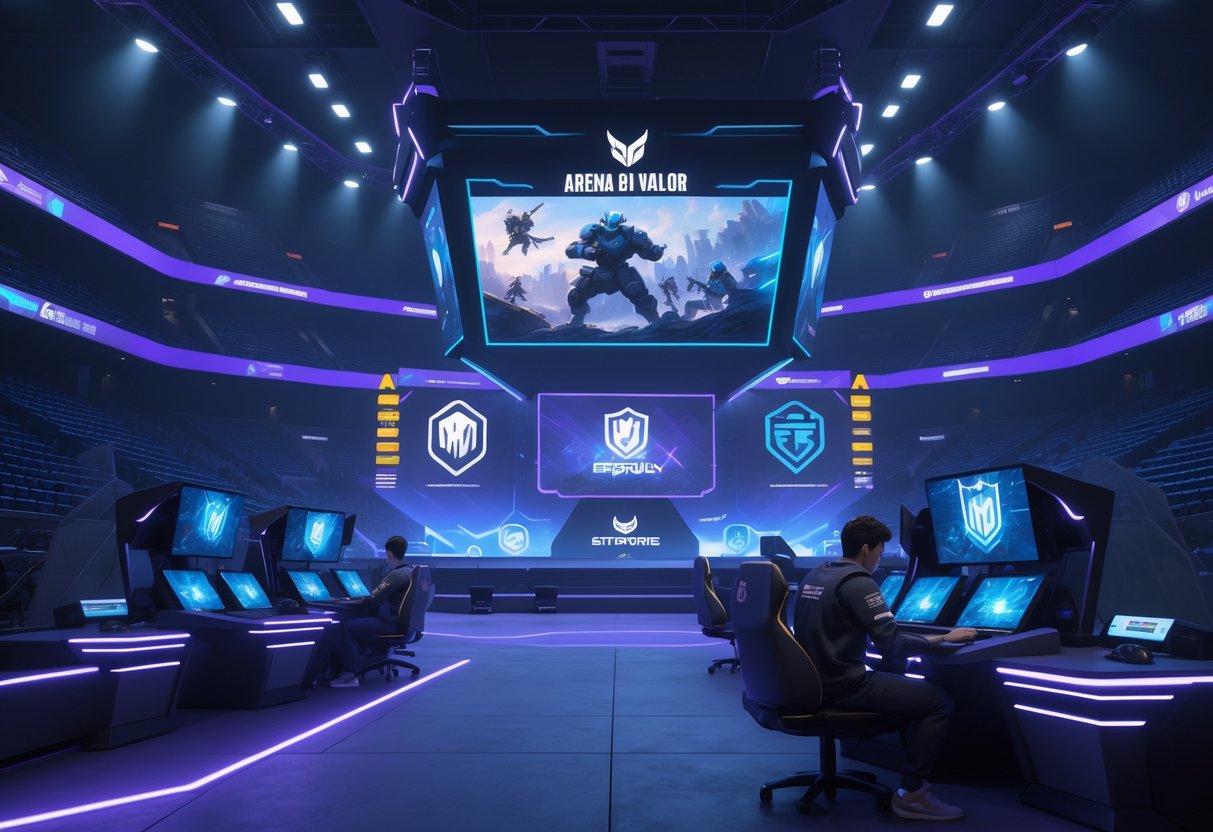
Esports organisations and tournament structures have changed a lot, and it’s had a pretty direct impact on Arena of Valor’s competitive scene. With less organisational involvement and new tournament formats, both players and fans have had to adjust how they interact with the game.
Declining Organisational Involvement
A lot of esports organisations have pulled back from Arena of Valor, mostly because the industry is feeling the squeeze. Venue rentals and tournament costs eat up budgets fast, and sponsorships aren’t as reliable as they used to be.
The mobile MOBA market is crowded now. Most big organisations go for PC games with bigger audiences, leaving fewer pro teams in Arena of Valor.
Quick win: If you want to keep up, follow the remaining teams on social media—they’re still out there.
When investment dries up, the whole esports ecosystem feels it. Pro players can’t really make a living on Arena of Valor anymore, so a lot of them jump ship to games with better support.
The community still puts together smaller tournaments and leagues. But let’s be honest—they just don’t have the production value or prize pools that the big orgs used to bring.
Changes in Tournament Structure
Tournament formats have moved away from regular leagues to more random events. We don’t see as many international championships as we did during Arena of Valor’s heyday.
Prize pools have shrunk in just about every Arena of Valor tournament. Big events that used to offer decent money now run on a shoestring.
Warning: Some tournaments might pay out late or even cut prizes because of financial issues.
Cross-platform play sounded promising, but it hasn’t really improved the tournament structure. The competitive scene still feels split up by region, and Asia is way more active than Europe or North America.
With more one-off events and fewer structured seasons, teams can’t build chemistry. It’s tough to form lasting partnerships when you never know when the next tournament is happening.
Community Sentiment and Player Retention
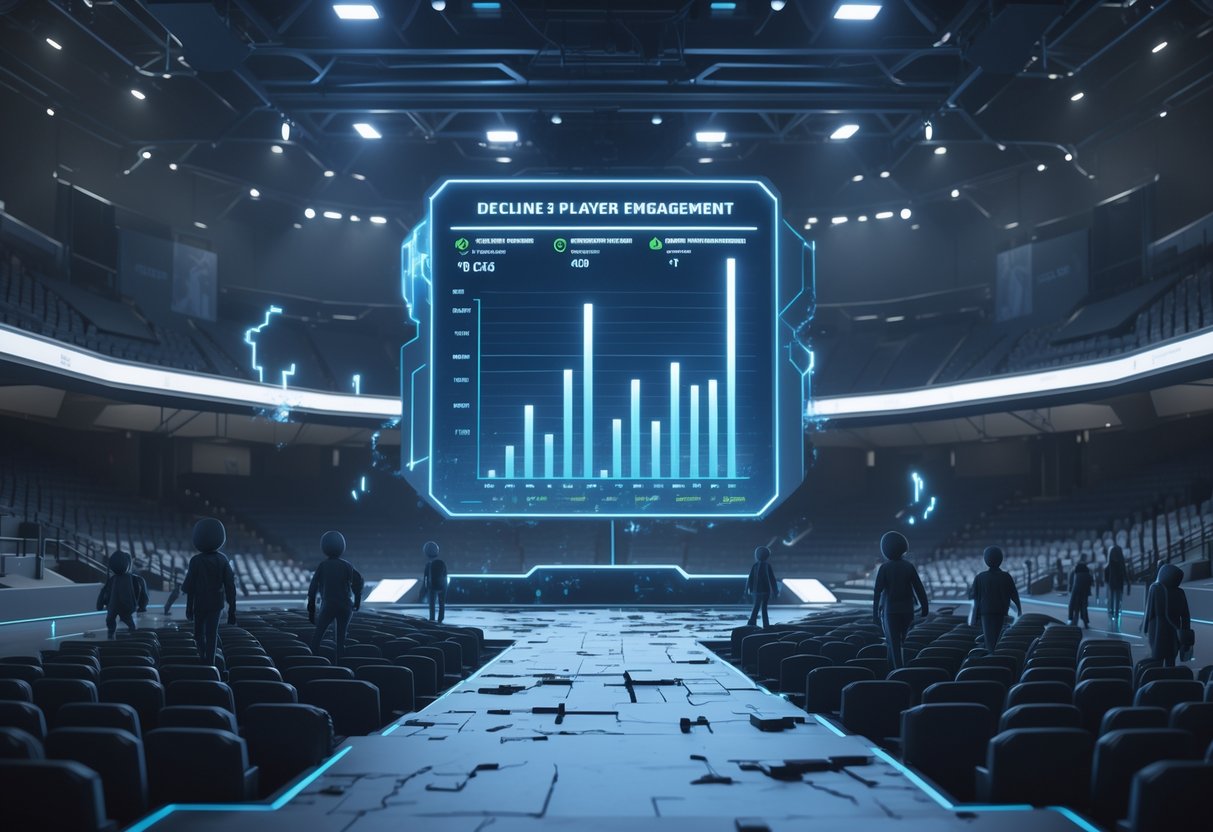
Players are getting more vocal about their frustrations with Arena of Valor’s competitive scene. Honestly, a lot of folks are worried about where the game is headed.
Long-time community members say they’re less satisfied than ever, and technical issues just push more people away.
Feedback from Loyal Players
The community sentiment around Arena of Valor has taken a nosedive lately. Players who’ve stuck around for years now talk about how disappointed they are with where things have gone.
A lot of loyal players feel like the devs have just left them behind. One veteran put it bluntly: “Arena was the only mode I truly enjoyed. What options do I have left?” That kind of nostalgia is everywhere right now.
Key player complaints include:
- Lower rewards and item drops make wins feel pointless
- Technical issues like crashes and disconnects happen way too often
- Bad team balancing leads to unfair games
It’s especially worrying because these players usually keep the community alive. They’re the ones making content, helping new folks, and holding the social side together.
Some experienced players argue that the shift in tactics has hurt teamwork. They say the focus on aggressive, kill-heavy playstyles is pushing out those who like strategy and collaboration.
Concerns Over Cheating and Fair Play
Concerns about fair play have really taken over community chats. Players keep running into lopsided matches that just don’t feel competitive.
Match integrity is a mess. People talk about joining games where the teams are uneven, like “5 out of 6 matches I played today had us 3v2.”
Common fair play issues include:
- Teams starting short-handed
- Suspected matchmaking tricks
- Technical exploits at the worst times
Players get especially annoyed when teammates quit early. One guy said, “I leave when I spawn in a 2v3,” which kind of sums it up.
These problems go beyond just one or two games. A lot of people are starting to doubt if the competitive scene is even legit, especially when bugs and bad matchmaking keep ruining the experience.
The whole thing turns into a vicious cycle. Frustrated players leave, which makes matches worse for everyone else, and more people quit in response.
Comparison with Other MOBA Titles
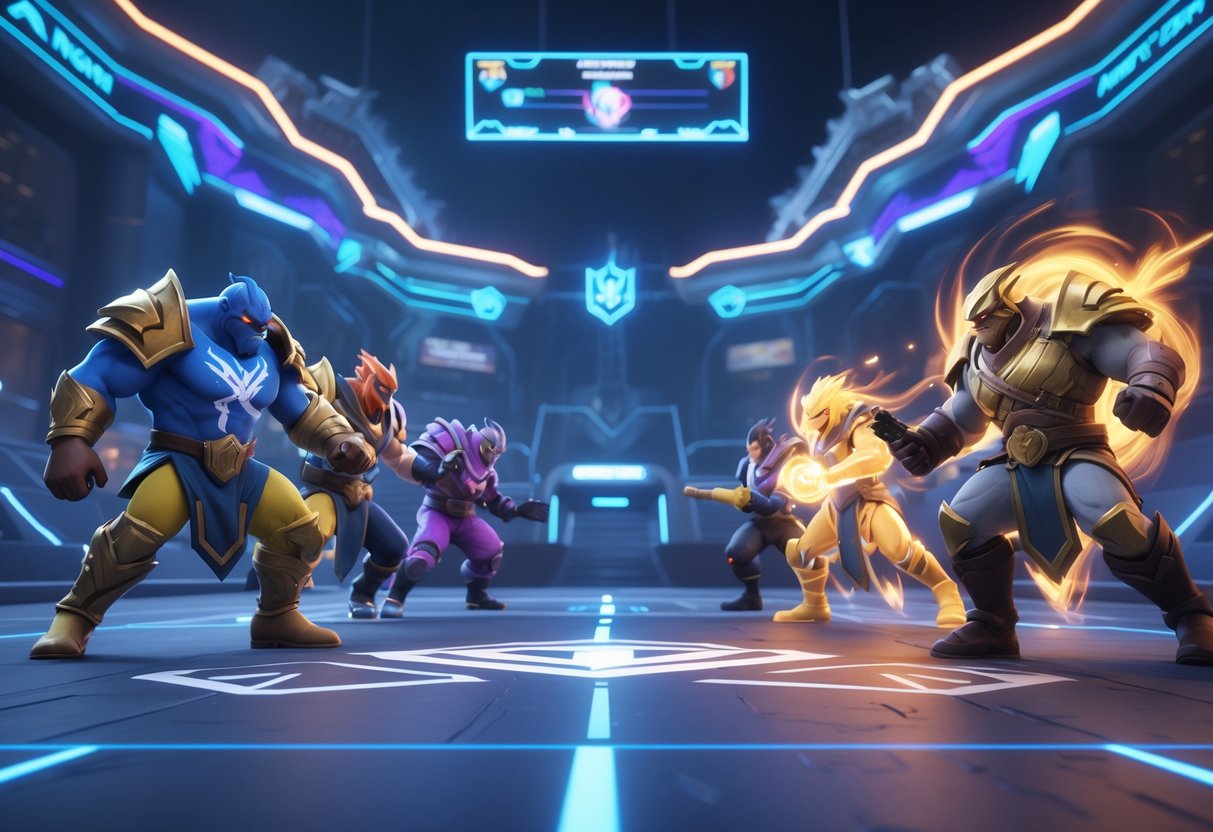
Arena of Valor faces some pretty unique challenges when you stack it up against other mobile MOBAs. The game just hasn’t matched the support or consistent updates that its rivals manage.
Competitive Ecosystem Differences
Mobile Legends: Bang Bang really owns the mobile MOBA scene, mostly because their competitive setup is so much better. The MPL (Mobile Legends Professional League) runs regional tournaments across Southeast Asia, and the prize pools aren’t bad at all.
Arena of Valor’s AOV Premier League never got the same kind of viewership. Mobile Legends locked down better sponsorships and kept their competitive seasons running all year.
Wild Rift showed up later, but Riot Games brought in their League of Legends esports know-how. They already had working tournament formats and team systems, so they just brought those to mobile.
Arena of Valor had to start from scratch. There was no established PC MOBA scene to build off of.
The prize pool differences are wild:
- Mobile Legends World Championship: $800,000+
- Arena of Valor World Cup: $500,000
- Wild Rift Icons Global Championship: $4,000,000+
Content Update Cadence
Arena of Valor used to release new heroes every few months. Mobile Legends cranks out new heroes monthly and does balance updates every other week.
Wild Rift goes for quality over quantity, but they still bring seasonal updates and new champions on a regular schedule.
Arena of Valor’s updates got spotty after 2020. Sometimes you wait ages for anything new, while other games keep things moving.
Even the cosmetic stuff lags behind. Mobile Legends puts together huge themed events with exclusive rewards, but Arena of Valor’s skins feel kind of basic. That hurts both player interest and the game’s bottom line.
In-Game Content and Hero Diversity
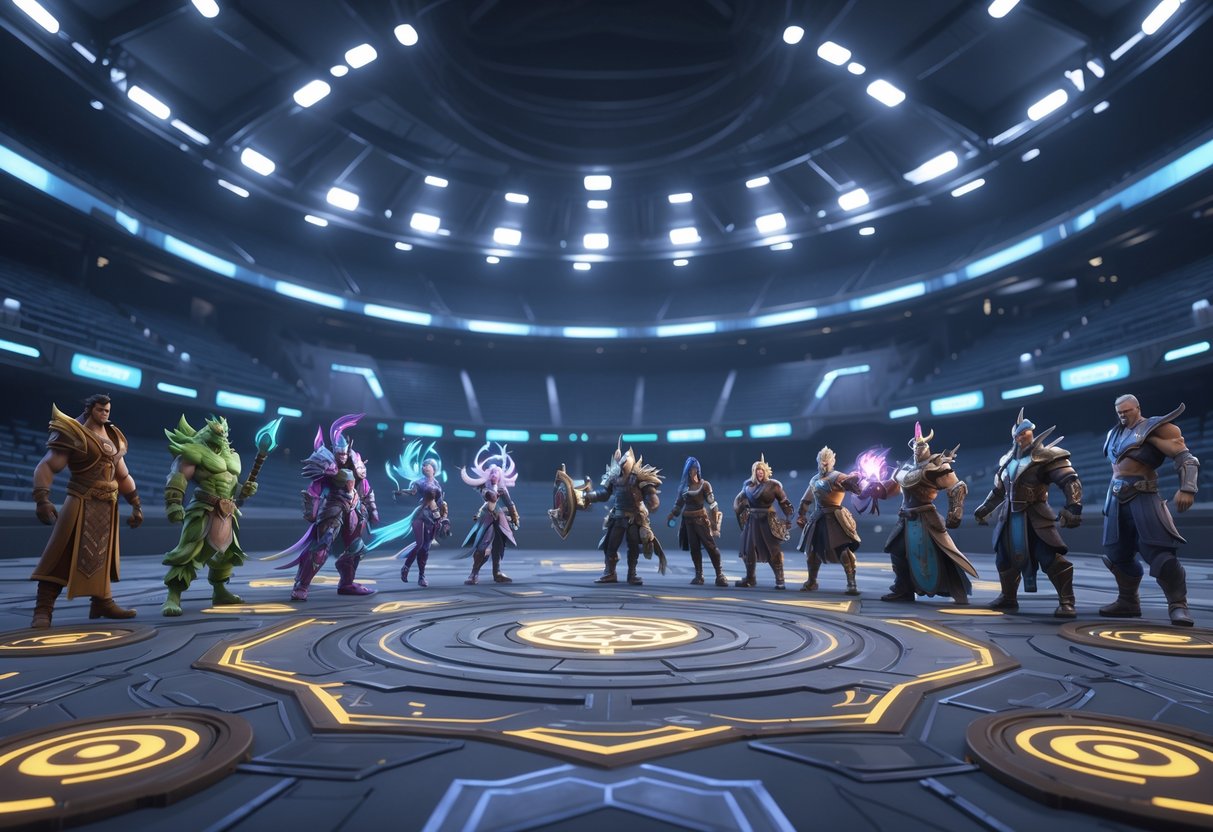
Arena of Valor’s competitive scene just can’t keep up, partly because new heroes come out too slowly and exclusive content is overpriced. Players notice, and they bail for games that keep things fresh.
Release Pace of New Heroes
Arena of Valor just doesn’t release new heroes fast enough. Other games, like Mobile Legends, add new characters way more often.
When the hero pool stays the same for months, people get bored. The competitive scene really suffers.
Key issues with hero releases:
- Long waits between new heroes
- Less variety than other MOBAs
- Fewer gameplay and balance tweaks
A lot of competitive players have switched to games with more frequent updates. If there aren’t new heroes, the meta just gets stale.
Teams can’t really experiment with new strategies when nothing changes for ages.
Collaborations and Exclusive Content
Arena of Valor leans hard on DC Comics collaborations, but honestly, they don’t deliver much new content. The game hypes up DC heroes, but rarely adds any.
Problems with exclusive content:
- Still missing big DC names like Harley Quinn and Green Arrow
- DC skins and heroes cost way too much
- Not enough collaboration content considering all the marketing
The high prices just drive away casual players. Most people can’t afford to buy these skins regularly.
This creates a gap between paying and free players. When key heroes are locked behind paywalls, competitive balance takes a hit.
In Southeast Asia, for example, player numbers have dropped because of these pricing decisions. People expect more from collaborations and want regular content drops.
Game Modes and Player Engagement
Arena of Valor’s competitive decline mostly comes down to how game modes attract and keep players. Ranked play brought in serious competitors, but arcade-style modes just couldn’t hold attention for long.
Popularity of Ranked Versus Casual Modes
Ranked mode really became the heart of Arena of Valor’s competitive scene. Players spent months grinding from bronze to challenger, and that clear sense of progress kept them hooked.
The 5v5 ranked matches had the most strategic gameplay. Teams needed good comps, smart ganks, and solid objective control to climb.
Key ranked features that worked:
- Seasonal rewards and cosmetics
- Obvious skill tiers
- Competitive matchmaking
- Leaderboards for bragging rights
Classic matches in casual mode helped new players learn, but they just didn’t have the intensity that serious players wanted.
The gap between casual and ranked became a problem. Some players stuck with low-pressure games, while others jumped into ranked without enough practice. That mismatch just made matches worse in both modes.
Success and Failure of Arcade Experiences
Arena of Valor tried out all sorts of arcade-style game modes to reach a wider audience. Some of these modes caught on for a bit, but others just didn’t stick with the main crowd.
Successful arcade modes included:
- Abyssal Clash (kind of like ARAM)
- Hook Wars (all about skill-shots)
- Death Match variations
These modes gave players a chance to jump into quick 10-15 minute matches. You could mess around with new heroes without having to sit through a full 20-30 minute ranked game.
The faster pace pulled in mobile gamers who really just wanted something fun during short breaks or commutes.
But arcade modes ran into some big issues. They ended up splitting the player base between too many queues, which made matchmaking drag on. Most players saw them as just short-lived distractions, not something worth investing in seriously.
Arcade modes didn’t offer much progression either. Without ranked ladders or decent rewards, players drifted back to the regular 5v5 matches. We saw participation in arcade modes drop off pretty quickly after launch.
Limited-time events couldn’t keep people interested for long. Once the excitement faded, most players just stopped playing these experimental modes altogether.
The Future of Arena of Valor Competitive Play
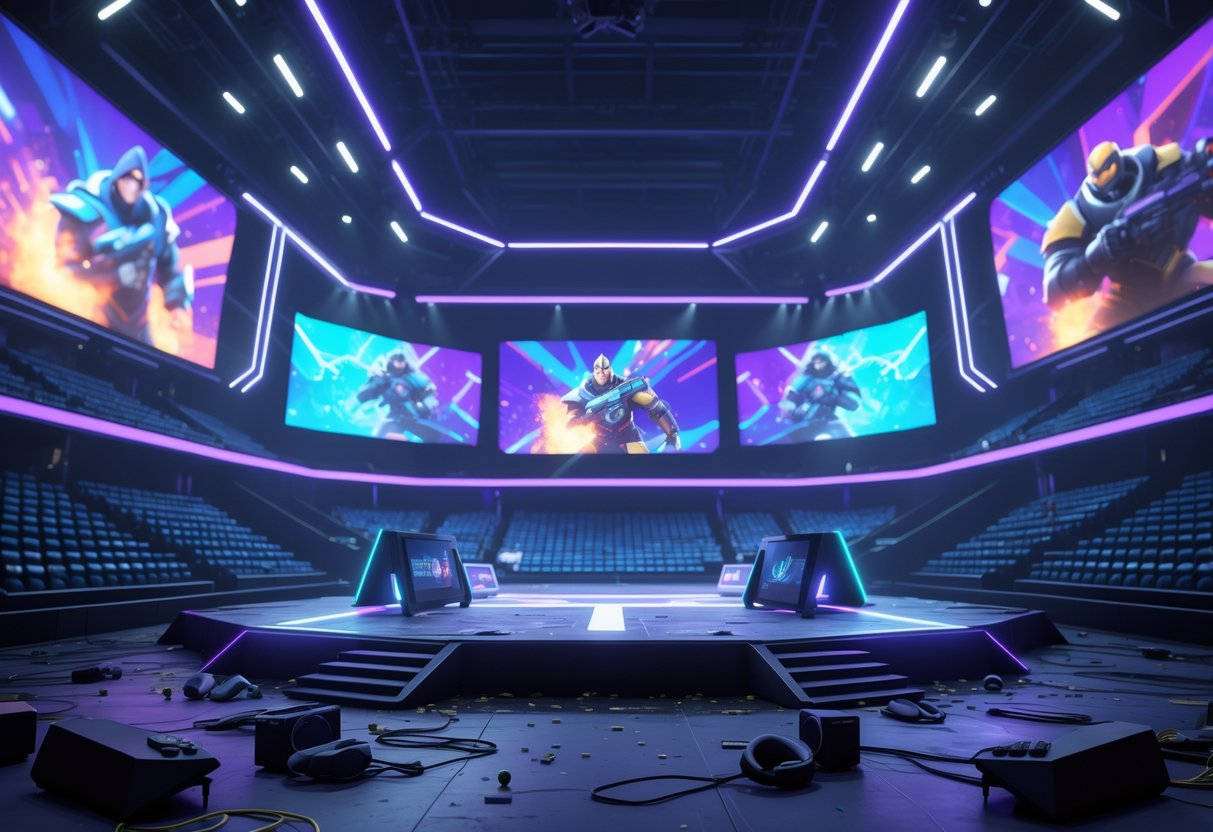
Arena of Valor’s competitive future really comes down to whether developers and the community step up. Maybe, with some big investments and grassroots energy, tournament infrastructure could come back to life and reel in new esports organisations.
Potential Developer Interventions
Tencent honestly holds all the cards for reviving Arena of Valor’s competitive scene. If they wanted, they could start up regional leagues with prize pools of £50,000-£100,000 and probably get pro teams interested again.
Boosting mobile esports infrastructure also feels vital. Things like updated spectator modes, better tournament tools, and easier streaming could help Arena of Valor keep up with newer MOBAs.
Developer priorities should include:
- Monthly tournaments that actually stick to a schedule
- Smoother matchmaking for high-level play
- Partnership programs for esports organisations
- Better broadcasting features for tournaments
They could even set up academy leagues for up-and-coming players. These smaller competitions would help build up fresh talent for the pro scene.
Prospects for Reviving the Esports Scene
Community-run tournaments might honestly be the most realistic way forward for competitive Arena of Valor right now. Grassroots groups have kept other games alive, even when developers stepped back.
University esports programs could open up new opportunities too. More schools offer mobile gaming scholarships now, so Arena of Valor could carve out a niche in college competitions.
Key revival opportunities:
- Third-party organisers running tournaments
- Community leagues in Southeast Asia
- Tying in with existing mobile gaming events
- Partnering with gaming cafés for local matches
Some regions still have a solid player base, enough to support smaller tournaments. Local events like these might slowly build up to bigger international competitions.
Still, Arena of Valor has to fight for attention against League of Legends: Wild Rift and other big-name MOBAs. That competition for esports investment and players is stiff.
Frequently Asked Questions
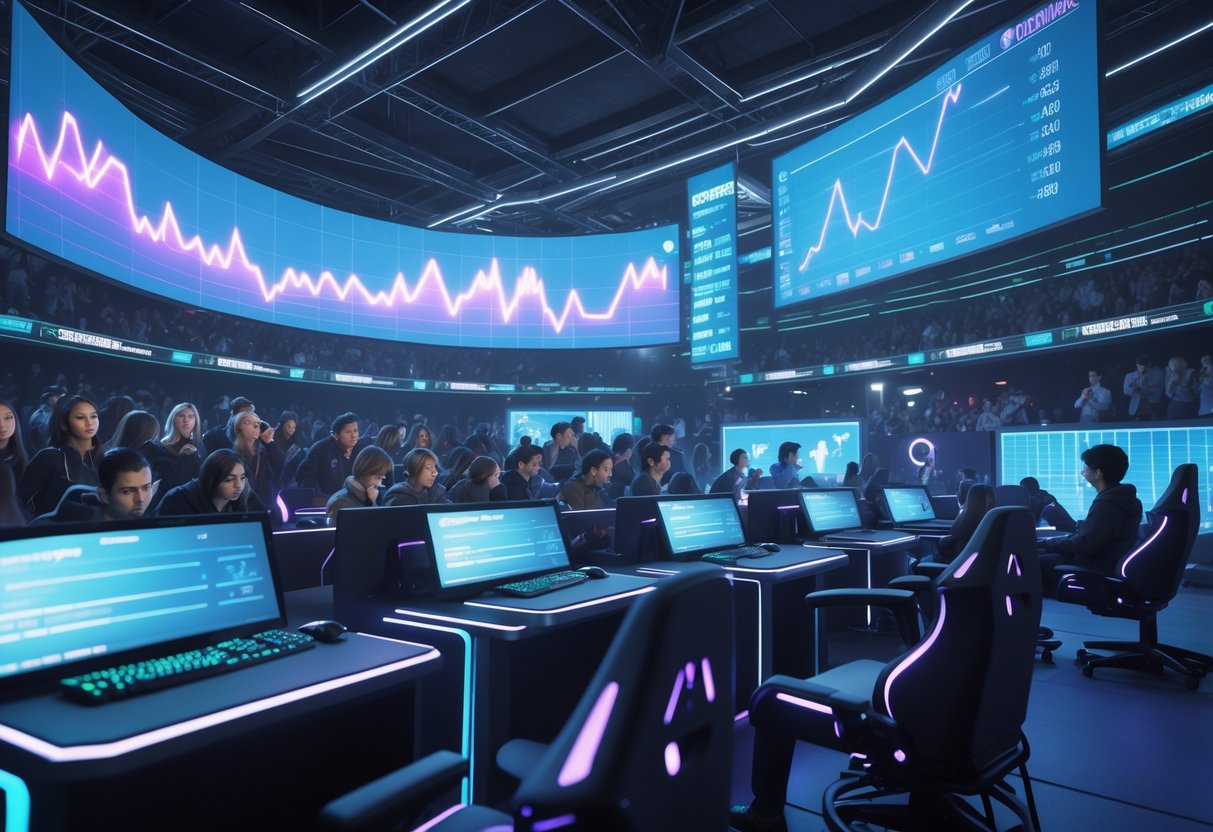
A bunch of factors shape Arena of Valor’s competitive struggles. Regional differences, developer choices, and the whole mobile gaming scene all play a part. Player feedback and shifting markets keep forcing the game to adapt if it wants to keep its competitive crowd.
What factors have contributed to changes in the popularity of Arena of Valor tournaments?
Arena of Valor tournaments do well in Southeast Asia, especially Vietnam and Thailand. Big competitions there still pull in fans.
Western markets, though, are a different story. Players in the US and Europe deal with technical issues like weird non-English text and server headaches, not to mention trolls.
League of Legends and other big MOBAs dominate in the West, so Arena of Valor just can’t get the same traction. The game thrives in some places but struggles in others.
There are still regional tournaments like the Arena Challenger Series Pro League in Taiwan and the Realm of Valor Pro League in Thailand. These keep the scene alive at home.
How has the shift in player base affected Arena of Valor’s competitive scene?
The player base is now mostly concentrated in Southeast Asia, and that shapes the competitive scene. Tournaments still work in places where the game has a lot of daily players.
In the West, competitive participation keeps dropping. That affects global prize pools and the number of international tournaments.
Most competitive events now focus on specific regions instead of mixing players from everywhere. Pro players from shrinking regions often switch to other MOBAs, which hurts the overall skill level and viewership.
Are there any significant updates or game changes that have led to a decrease in competitive play?
Update schedules have slowed down, especially outside Southeast Asia. That makes the competitive meta feel stale and less exciting for tournaments.
Hero redesigns aimed at Western players didn’t really work out. Sometimes they even pushed away existing players without bringing in enough new ones.
Cross-platform play between Android, iOS, and Nintendo Switch is a nice touch, but platform-specific issues still mess with competitive balance.
When regions stop getting regular updates, the competitive scene just loses steam. Players want fresh meta changes to stay interested.
How are the developers responding to feedback regarding the competitive aspects of Arena of Valor?
Tencent set up the AO Vision 2024 Co-creation initiative, letting players vote on heroes and skins. It’s a step towards listening to what the community wants.
Developers focus their resources on regions where the game’s doing well. So, Southeast Asian tournaments get more love, while Western markets get less attention.
They’ve improved cross-platform compatibility, which shows some commitment to fixing technical issues. But some regions still deal with server problems.
Bringing in player feedback through the co-creation program is a shift toward development driven by the community. Maybe that’ll help keep competitive players interested where the game’s still popular.
What trends in mobile gaming have influenced the competitive landscape for games like Arena of Valor?
Mobile MOBA competition keeps heating up, with games like Mobile Legends grabbing a bigger slice of the market. That puts pressure on Arena of Valor in some regions.
Battle royale games on mobile pull players and sponsors away from MOBAs. Everyone’s chasing the latest trend, so tournaments and investment shift focus, too.
Cross-platform gaming is a big deal now. Players want to jump between devices without hassle, which puts older mobile-first games in a tough spot.
Streaming and content creation trends lean toward games with more Western appeal. That makes it harder for Arena of Valor to grow its competitive audience outside its strongholds.
Have any new games or genres impacted the player commitment to Arena of Valor’s competitive community?
League of Legends still dominates Western markets. It goes after the same MOBA crowd, so a lot of players just pick the bigger name.
Mobile Legends: Bang Bang is right there as a direct rival on mobile. Players who might’ve jumped into Arena of Valor tournaments sometimes drift over to Mobile Legends instead.
Battle royale games like PUBG Mobile and Call of Duty Mobile pull in tons of attention from mobile gamers. They draw esports investment too, usually with bigger prize pools and more hype.
Auto-chess and other strategy games on mobile have carved out their own competitive scenes. This shift spreads the esports audience across more genres and takes some of the focus off traditional MOBAs.


